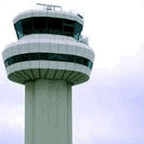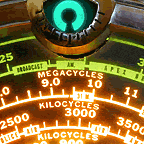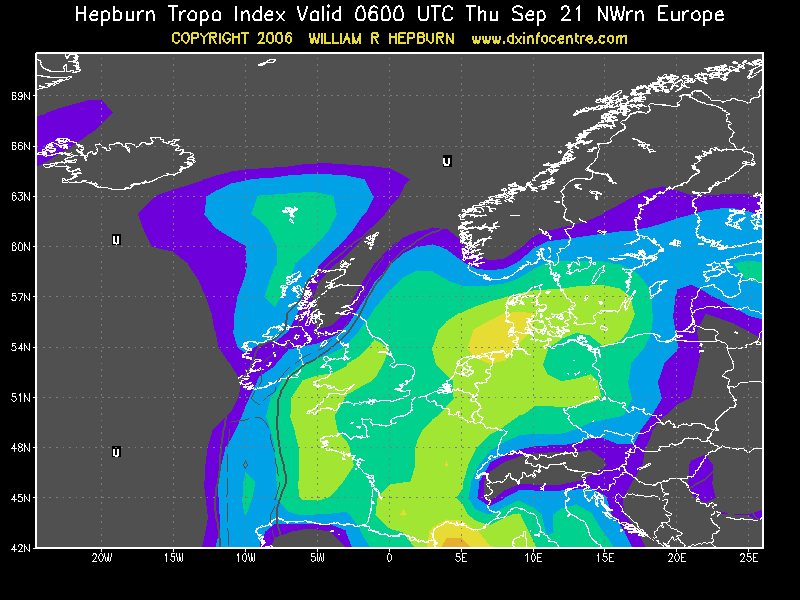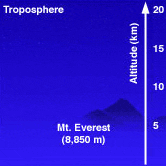Wednesday 8 November, 2006, 15:29 - Amateur Radio
 When I'm at home, my receiver is usually switched on monitoring one frequency or another, commonly 145.500 or the local 70 cm repeater. Yesterday I was doing the latter and it soon became apparent that there was some active tropogation around. In addition to my local repeater, other amateur repeaters from typically 300km distant were fading in and out with regularity. What I noticed, however, was that the audio for all these distant repeaters (and, mysteriously, the local ones too) was accompanied by a rather annoying crackle.
When I'm at home, my receiver is usually switched on monitoring one frequency or another, commonly 145.500 or the local 70 cm repeater. Yesterday I was doing the latter and it soon became apparent that there was some active tropogation around. In addition to my local repeater, other amateur repeaters from typically 300km distant were fading in and out with regularity. What I noticed, however, was that the audio for all these distant repeaters (and, mysteriously, the local ones too) was accompanied by a rather annoying crackle.My first thought was that the coax cable feeding the antenna must have a dry joint in it somewhere and the gentle wind blowing it back and forth was causing an intermittent connection. But I checked reception of repeaters on 2 metres and these were clear of the crackling noise which indicated that the effect was real, and was being received right across the 430-440 MHz band.
The next port of call was the various items of household equipment that could cause such relatively focussed wide-band noise; thermostats, fluorescent lights, computers, vacuum cleaners and similar devices being the typical culprits. But wandering around the house with a hand-held UHF receiver, it soon became apparent that none of these were the problem, nor could the crackle now be heard at all on the local repeater, though it was still there on more distant stations.
Then I remembered the BMEWS radar at Fylingdales near Scarborough and Whitby on the North Yorkshire Moors. This operates from 420 to 450 MHz and is renowned for producing interference resembling a crackling sound right across this frequency range. Obviously the tropogation was carrying the BMEWS signal the 350 km across the UK to my receiver.
Having now heard the kind of noise that this early warning radar produces, it amazes me that radio amateurs anywhere in Yorkshire or Durham can use the 70 cm band at all, but apparently they do! But this isn't the only noisy noise that annoys users of this band.
 Recommendation 70-03 largely prohibits the use of voice or audio signals in this sub-band, but that doesn't stop (cheap) equipment being produced that is capable of doing just that. And if cheap equipment is available, someone will buy it. Monitoring 433.925 MHz in my area yields what sounds like a wirless audio link being used to relay television sound from one room to another, as well as occasional walkie-talkie like conversations. But who is going to stop this equipment being used illegally like this? Ofcom? They can't even keep obvious spectrum miscreants such as pirate radio operators down, so they're unlikely to be bothered about people who are using voice in a non-voice band.
Recommendation 70-03 largely prohibits the use of voice or audio signals in this sub-band, but that doesn't stop (cheap) equipment being produced that is capable of doing just that. And if cheap equipment is available, someone will buy it. Monitoring 433.925 MHz in my area yields what sounds like a wirless audio link being used to relay television sound from one room to another, as well as occasional walkie-talkie like conversations. But who is going to stop this equipment being used illegally like this? Ofcom? They can't even keep obvious spectrum miscreants such as pirate radio operators down, so they're unlikely to be bothered about people who are using voice in a non-voice band.So can anything be done to recover the band for radio amateurs? Well the old adage 'use it or lose it' has never been more applicable. If the band were full of transmissions, the ERO would never have considered it for such low-power devices. But it's not too late. A good 20 Watt transmitter on 433.925 MHz should wipe-out key-fobs, freezer failure detectors and other mindless devices over a good few hundred or more metre radius. So next time you want to chat with a local amateur, why not go simplex on 70 cm on, say, 433.925 MHz just for the hell of it?! Antisocial? Me? It's legal. It's simple and it's worthwhile. See you on 70 cm then...
1 comment
( 817 views )
| permalink
| 



 ( 3.1 / 19609 )
( 3.1 / 19609 )




 ( 3.1 / 19609 )
( 3.1 / 19609 )
Wednesday 1 November, 2006, 16:47 - Radio Randomness
 As if this site isn't littered with enough useless information already, here's a load more. Having travelled to and from the various London airports on a number of occasions, I thought it would be nice to have an up-to-date list of the various air traffic control frequencies used at them (so that whilst en-route to the airport or waiting in the lounge I could tune-in to see exactly how delayed my flight is). Using the all-knowing Google proved rather confusing as lots and lots of differing lists appeared, so I decided to compile the lists together and then take a listen to see which channels were clearly active and which were now obsolete.
As if this site isn't littered with enough useless information already, here's a load more. Having travelled to and from the various London airports on a number of occasions, I thought it would be nice to have an up-to-date list of the various air traffic control frequencies used at them (so that whilst en-route to the airport or waiting in the lounge I could tune-in to see exactly how delayed my flight is). Using the all-knowing Google proved rather confusing as lots and lots of differing lists appeared, so I decided to compile the lists together and then take a listen to see which channels were clearly active and which were now obsolete.The results are posted below and only those frequencies heard to be active during random monitoring sessions in October 2006 are listed. The frequencies shown in italics were listed on a number of sites (sufficient to believe that they are for real) but monitoring showed that there was no activity, so they're listed just in case! All frequencies are in MHz.
 London Heathrow Airport
London Heathrow AirportApproach 119.725 134.975
Radar 120.400
Tower 118.500 (Departures) 118.700 (Arrivals)
Ground 121.900 121.700
Clearance 121.975
ATIS 121.850 (Departures) 128.075 (Arrivals)
London Gatwick Airport
Approach 126.825
Director 118.950
Tower 124.225
Ground 121.800
Clearance 121.950
ATIS 136.525
London City Airport
Tower 118.075
ATIS 136.350
London Volmet
Main 135.375
North 126.600
South 128.600
Other London Airports/Frequencies
Battersea Heliport 122.900
Thames Radar 132.700 (also used as Approach for London City Airport)
London VFR 125.625 (Visual Flight Rules)
London FIS 124.600 124.750 (Flight Information Service)
So there you have it. Together with a cheap airband scanner, you now have the knowledge required to depress yourself by listening in to flight controllers and discovering exactly how late your flight really is!
Thursday 5 October, 2006, 11:39 - Spectrum Management
 Something that's always been a nuisance is that the International Telecommunications Union (ITU) has made it's frequency allocation tables (i.e. the table which shows which frequencies are allocated to which services in which countries) something that has to be paid for if you want a full copy. The 'ITU Radio Regulations' is a large set of documents that describe radio usage and the heart of it is a set of 3 regional tables that allocate frequencies to specific uses and currently costs 252 Swiss Francs (about GBP107 at today's exchange rate).
Something that's always been a nuisance is that the International Telecommunications Union (ITU) has made it's frequency allocation tables (i.e. the table which shows which frequencies are allocated to which services in which countries) something that has to be paid for if you want a full copy. The 'ITU Radio Regulations' is a large set of documents that describe radio usage and the heart of it is a set of 3 regional tables that allocate frequencies to specific uses and currently costs 252 Swiss Francs (about GBP107 at today's exchange rate).  If you just want to know whether fixed links have an allocation at 8 GHz in France, that's rather a lot to pay.
If you just want to know whether fixed links have an allocation at 8 GHz in France, that's rather a lot to pay.I was delighted, therefore, to discover that the Region 1 (Europe, Africa, the Middle East and Asiatic Russia) and Region 3 (Asia and Australasia) information can now be access for free on the web-site of telecommunications consultants 'InterConnect Communications'. Their Electronic Frequency Allocation Table (E-FAT) service allows you to query the ITU tables viewing either the whole table or just the allocations to specific services.
A similar service, but only for specific European countries (well certain CEPT members) is provided by the European Communications Office (ECO) in the form of their European Frequency Information Services (EFIS).
Dead handy!
Thursday 21 September, 2006, 15:40 - Amateur Radio
Most day-to-day 'DX' propagation experienced by radio users at VHF and UHF frequencies relies on some interaction between their signal and the troposphere (the troposphere is the lower layers of the atmosphere extending up to about 10 miles above sea level). For anyone wanting to find out more about the different modes of tropospheric propagation, there is an excellent article by William Hepburn that describes them all.  The same web-site also gives 5 day predictions as to the possible level of tropospheric propagation that can be expected too - very interesting.
The same web-site also gives 5 day predictions as to the possible level of tropospheric propagation that can be expected too - very interesting.Having recently installed a simple VHF antenna on my house, I thought I'd do the usual thing and tune around the various amateur repeaters to see what kind of coverage I was achieving. According to predictions that I had done, I expected to be able to just about receive transmitters from a maximum of 80 miles away (my location is nothing special). I was a bit surprised to discover that I could regularly hear stations from around 150 miles (225 km) away on 2 metres (145 MHz) and similar distance but less commonly on 70 cm (433 MHz). Indeed with the radio on in the background whilst working one day, a number of repeaters on the same channel at distances of around 150 miles faded in and out with alarming regularity.
 Of course the culprit in extending my range in this way is the troposphere (together with the fact that most amateur repeaters tend to be high up to give wide coverage to start with). It would seem that, even on an almost 'flat' day, there is enough going on in the atmosphere to enhance reception (and transmission) even for a fairly simple set-up in a fairly average location.
Of course the culprit in extending my range in this way is the troposphere (together with the fact that most amateur repeaters tend to be high up to give wide coverage to start with). It would seem that, even on an almost 'flat' day, there is enough going on in the atmosphere to enhance reception (and transmission) even for a fairly simple set-up in a fairly average location.Now from an amateur radio perspective, this is great fun. From a 'professional' radio user's perspective this must prove a nightmare. Typically VHF frequencies will be re-used witin about a 80 mile radius, so that under totally flat conditions there is theoretically no potential for interference. However if 'tropogation' is as common as it would appear to be from my location, the levels of interference between commercial VHF (and to a lesser extent UHF) users must be a real nuisance - and there's nothing that can be done about it. Or is there...?
 Some television transmitters employ a technique known as 'beam-tilt' which points the signal from a transmitter slightly below horizontal. Doing this limits the range of the transmitter whilst at the same time reducing interference further away and producing a slightly stronger signal in the wanted coverage area. A beam-tilt of about 1 degree down from the horizon can make quite a difference. The problem is that it takes careful antenna design and often quite large and complex antennas to achieve beam-tilt so it isn't a solution for your average taxi company or security company.
Some television transmitters employ a technique known as 'beam-tilt' which points the signal from a transmitter slightly below horizontal. Doing this limits the range of the transmitter whilst at the same time reducing interference further away and producing a slightly stronger signal in the wanted coverage area. A beam-tilt of about 1 degree down from the horizon can make quite a difference. The problem is that it takes careful antenna design and often quite large and complex antennas to achieve beam-tilt so it isn't a solution for your average taxi company or security company.A solution which is within the financial reach of most users is something known as CTCSS. This encodes a sub-audible (i.e. silent) tone onto each transmitter. Only transmitters and receivers set to use the same tone can hear each other. Such a system stops receivers from falsely hearing interfering transmitters - always assuming that the interfering transmitter has a different CTCSS tone to the one you want to receive. CTCSS, however, wouldn't stop the signal from causing interference, just stop you from hearing it.
Anyway, none of this is a problem for me. I'm just happy that my humble set-up is providing hours of endless fun (hmmm... must find something better to do) as I hear distant repeaters come and go!


